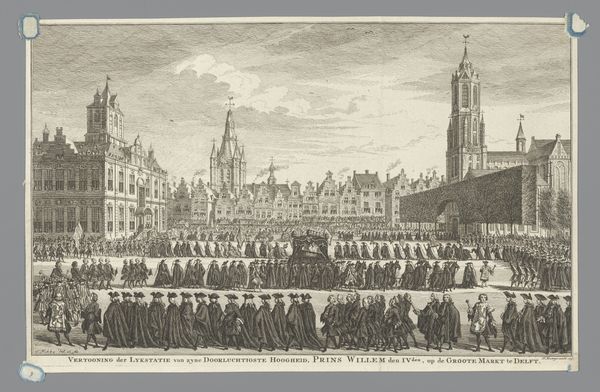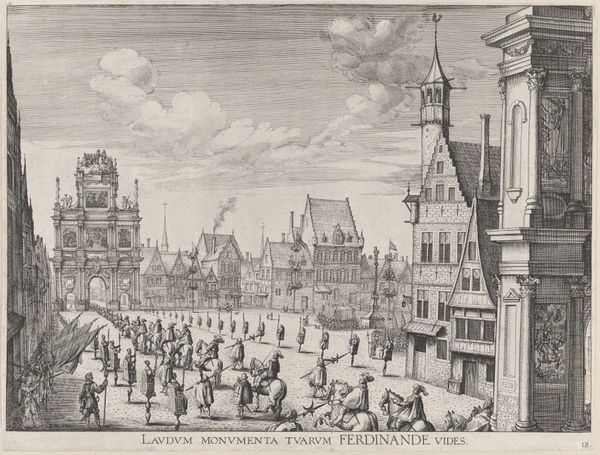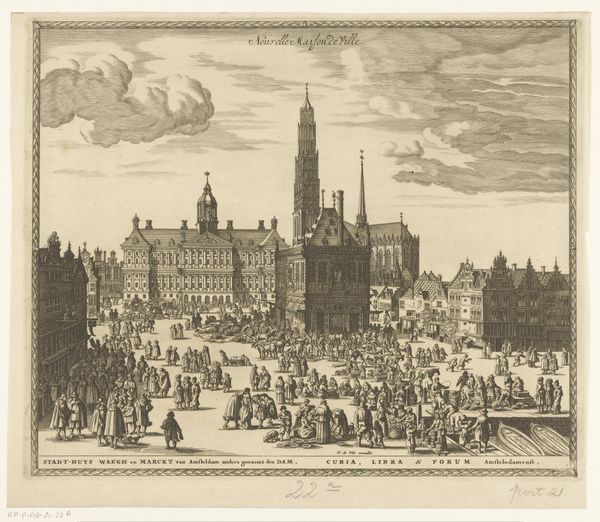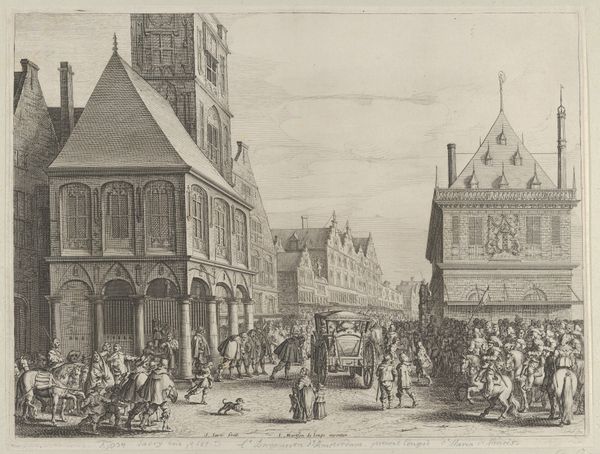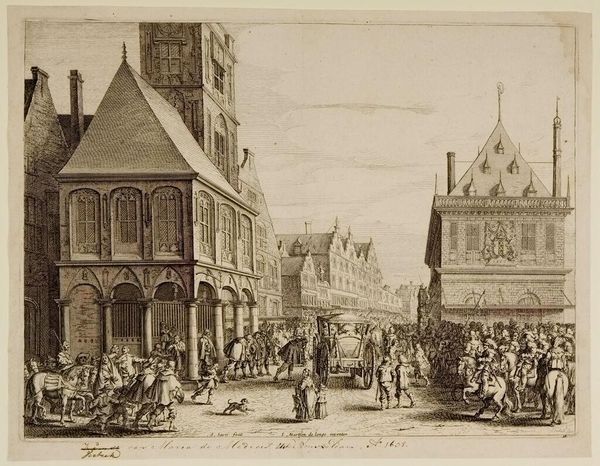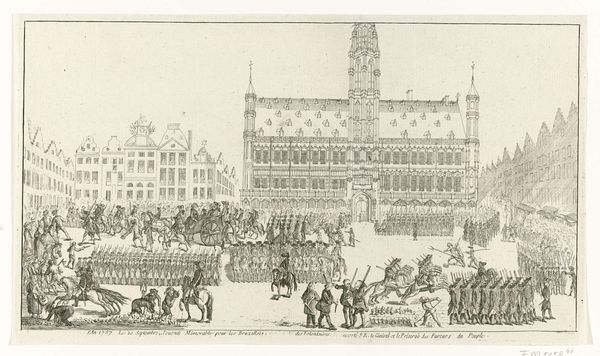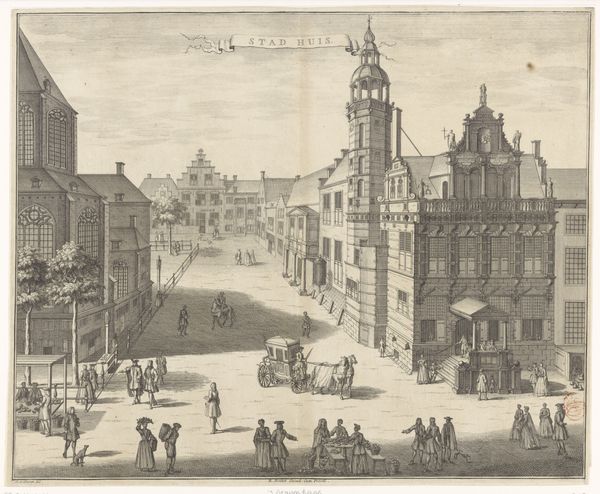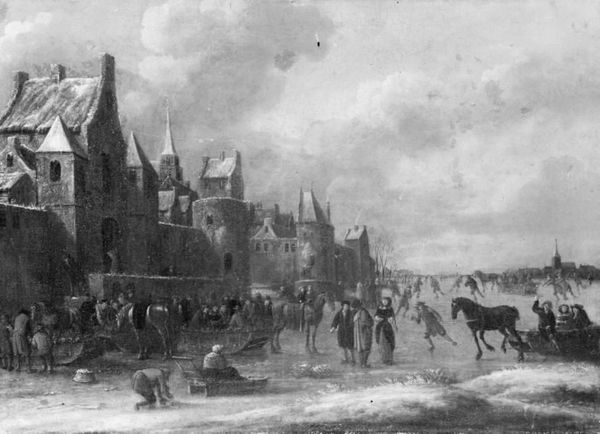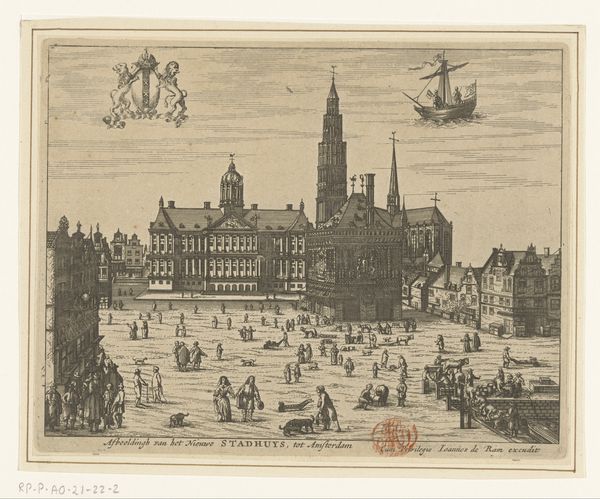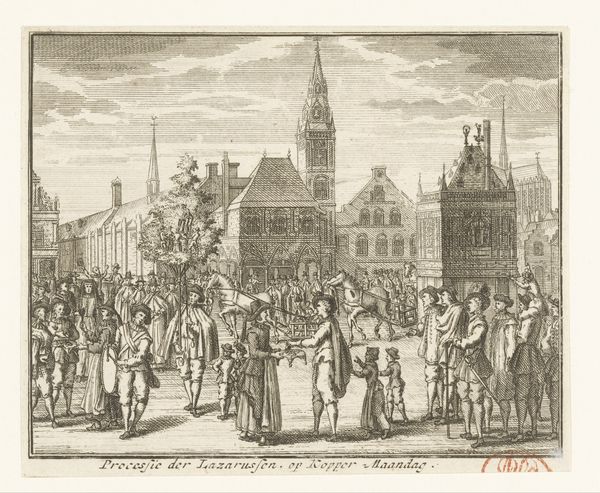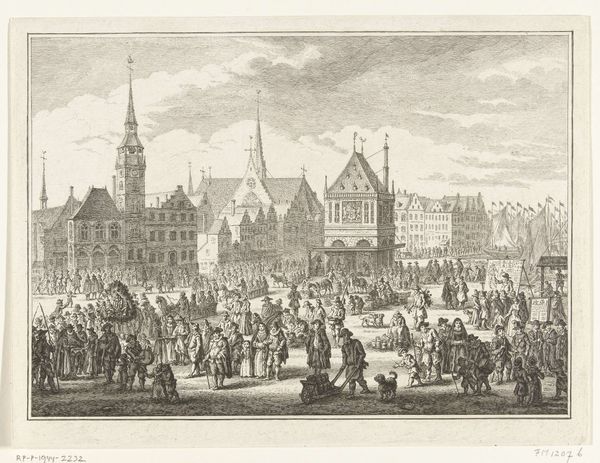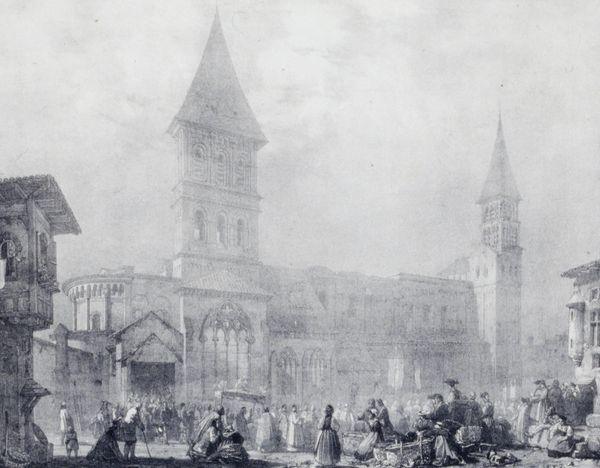
Disbanding of the Mercenary Troops on the Neude, Utrecht, July 31st, 1618 1618
0:00
0:00
painting, oil-paint
#
baroque
#
dutch-golden-age
#
painting
#
oil-paint
#
cityscape
#
genre-painting
Dimensions: 41 cm (height) x 72 cm (width) (Netto)
Curator: This painting, housed here at the SMK, is titled "Disbanding of the Mercenary Troops on the Neude, Utrecht, July 31st, 1618," created in that same year, 1618, by Pauwels van Hillegaert. The medium is oil on panel. Editor: It's predominantly monochrome, creating a rather stark, almost austere effect. The rigid lines of the buildings and the troops amplify that feeling of controlled solemnity, wouldn't you say? Curator: Precisely. Observe how Hillegaert has structured the composition: the perspective directs your eye down the Neude toward the Domtoren, effectively making the city itself a key subject. Editor: The cityscape is compelling but secondary. It feels much more like propaganda than the calm cityscape one would expect from Golden Age painting. These aren't your average militia members but disbanded troops. The brushwork on them isn't especially precise either. I would argue that this is primarily an important sociopolitical statement. Curator: Note, too, the masterful treatment of light, how it falls on the architectural elements, adding depth and texture. The tonal contrasts further delineate forms within this almost grayscale scheme. Editor: Certainly, one could explore the historical moment it captures, specifically how this scene symbolizes a return to order and the resolution of conflicts between religious factions within Utrecht at that time. What might have led Hillegaert to choose such a deliberately reserved palette? Did the almost grayscale color scheme make this artwork cheaper and faster to produce? What can you tell me about that choice of artistic style? Curator: Interesting lines of thought. My feeling is that while one can interpret political and economic subtexts into it, the artistic choices contribute most notably to the overall compositional harmony, regardless of their origins. This lends gravity, almost monumentality to this painted snapshot. Editor: It does so in an interesting way; this approach gives voice to this specific historical juncture. Art captures these key cultural and political transitions of the time in an especially intriguing light. Curator: Indeed. Analyzing both the artist's formal strategies and their historical implications enriches our understanding and enjoyment. Editor: Exactly. Let's remember to consider how such a scene, presented during this period, would influence the socio-political landscape of the day.
Comments
No comments
Be the first to comment and join the conversation on the ultimate creative platform.
